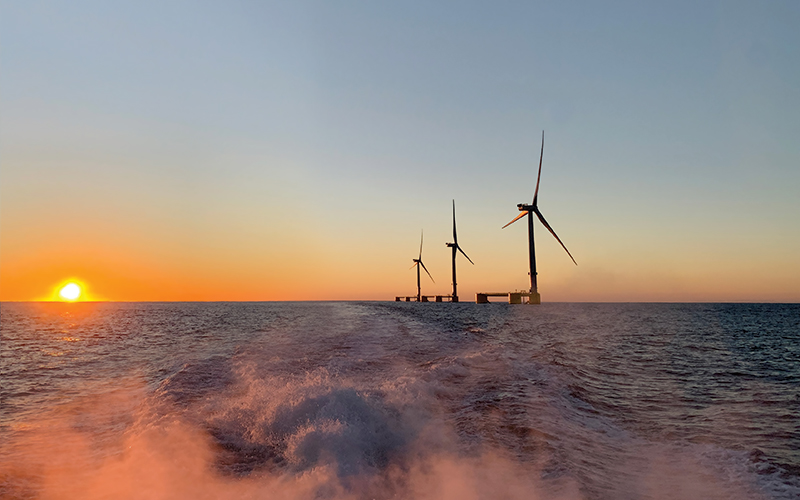Harnessing the potential for floating offshore wind
Floating offshore wind will play a vital role in the energy transition globally, but it can only reach its full potential with the committed and wide-ranging support of governments, writes Aaron Smith, CCO at Principle Power – the industry-leading provider of floating wind platform technology, the WindFloat®

With more than 80% of the global offshore wind resource in waters over 40m deep, floating offshore wind (FLOW) is emerging as a solution to unlock an enormous amount of previously inaccessible renewable energy resource. The Carbon Trust Joint Industry Project estimates that the sector will grow to 10GW by 2030 and with an upside potential of 120GW by 2040.
Globalising floating wind power
Last year, Principle Power commissioned the 25MW WindFloat Atlantic (WFA) floating wind farm off Portugal – continental Europe’s first multi-unit floating array and the first project to obtain bank finance. It was a key milestone for the company, as well as the industry. The project serves as a springboard for the expansion of floating wind globally. Operations experience from this project is already being fed back into our design, allowing us to increase competitiveness and refine our procedures and processes for the much bigger projects ahead.
We are currently supporting our customer Cobra Wind International Ltd to finalise the construction of the 50MW Kincardine project in Scotland, which will be the world’s largest floating wind farm when it comes online this spring. We are also finalising the detailed design for the 30MW Golfe de Lion project in the French Mediterranean, which will be the first floating project to use wind turbines with a rated capacity exceeding 10MW. Beyond these first small projects, we support customers such as Ocean Winds, Aker Offshore Winds, Simply Blue Energy and Total, with several commercial-scale projects ranging between 100 and 1,000MW due online by midway through this decade.
It is critical to note that the speed of growth for the floating wind sector in any market is dependent on political and regulatory factors. These create the volume and visibility required for the industry to invest with confidence, driving the development of the supply chain and achieving cost reduction.
The willingness of governments to make sites available to project developers is key for enabling projects, and the slow pace at which governments are awarding sites has been a restricting factor.
We see immense potential in the Asia Pacific region as governments increasingly look to FLOW energy to expand their portfolios of domestic renewable energy. Although the market is nascent, developers in Japan, South Korea, Australia, China, Vietnam and Taiwan are advancing projects.
Unlocking economic potential
Industry bodies, including EIC, showcase the potential opportunities that the sector can bring to local job creation and revitalising coastal industry. According to some, if the UK government adapts its support mechanism to help promote the industry, floating wind power could be built into an annual market worth tens of billions of pounds by 2050. We see that this potential economic growth can be replicated in other markets, especially where national plans aim to foster local content and jobs.
Principle Power is entering into a new phase in its development as a company, and the floating wind industry is becoming increasingly dynamic as the market prepares for growth. As a market leader, we continue our work to make floating wind projects happen in every major global maritime region as quickly and competitively as possible. We intend to globalise FLOW and enable countries to unlock the massive potential of this renewable energy resource, to help address the threat that climate change presents to our planet.
By Aaron Smith, Chief Commercial Officer, Principle Power






Follow us
Advertise
Free e-Newsletter